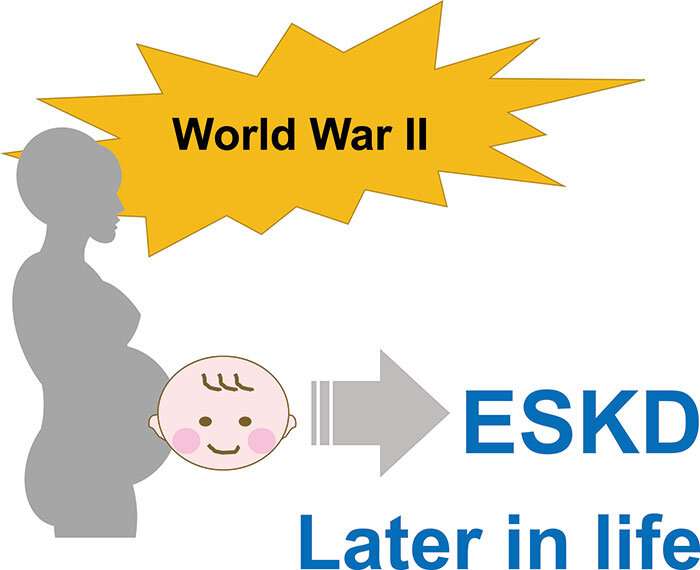This article has been reviewed according to Science X's editorial process and policies. Editors have highlighted the following attributes while ensuring the content's credibility:
fact-checked
proofread
Notable birth cohort effects on the incidence trend of renal replacement therapy in Japan

A Japanese nationwide study revealed the risk of incident end-stage kidney disease (ESKD) requiring renal replacement therapy (RRT) initially rose in the early birth cohorts, peaked, and then declined in more recent birth cohorts in both sexes, but the peaks were different in each sex, showing elevated trends peaking in the 1940–1960s birth cohort for men and for women.
"Different birth cohorts may have different levels of exposure to a particular risk factor, which may produce a change in disease incidence for individuals born at a particular time, i.e., a cohort effect," said Dr. Wakasugi, the corresponding author of the study. "Age-Period-Cohort (APC) analysis, a statistical method to distinguish between age, period, and cohort effects, helps us assess if particular age groups or birth cohorts should be targeted for interventions."
Using data from the Japanese Society of Dialysis Therapy registry and national census between 1982 and 2021, the study revealed the risk of incident RRT initially rose in the birth cohorts, peaked, and then declined in recent birth cohorts in both sexes, but the peaks were different for each sex, showing elevated trends that peaked in the 1940–1960s for men and 1930–1940s for women.
"Our findings suggest that men born in the 1940–1960s and women born in 1930–1940s may be important target populations to consider when reducing incidence rates of RRT among the Japanese population," said Dr. Wakasugi. "While the exact reasons for the cohort effects on the incidence rate for RRT cannot be determined precisely from our data, the influence of poor environmental conditions caused by war at birth may increase the risk of ESKD requiring RRT.
"During World War II (1939–45) and for a few years thereafter, the nutrition of the Japanese population was extremely poor. Poor maternal nutrition can cause low birth weight, which has been associated with a subsequent disproportionally high incidence of hypertension, diabetes mellitus, cardiovascular disease, and chronic kidney disease.
"This hypothesis is supported by a previous study that applied the APC model using the Taiwan Renal Disease System Databases and showed that the birth cohort of 1943–47 (during the period of World War II) had the highest risk of dialysis compared with the other birth cohorts. This explanation, however, would not apply to the high risk of incident RRT among men born in the 1960s. Thus, other reasons may be responsible for these findings."
More information: Minako Wakasugi et al, Birth cohort effects in incident renal replacement therapy in Japan, 1982–2021, Clinical and Experimental Nephrology (2023). DOI: 10.1007/s10157-023-02345-x



















